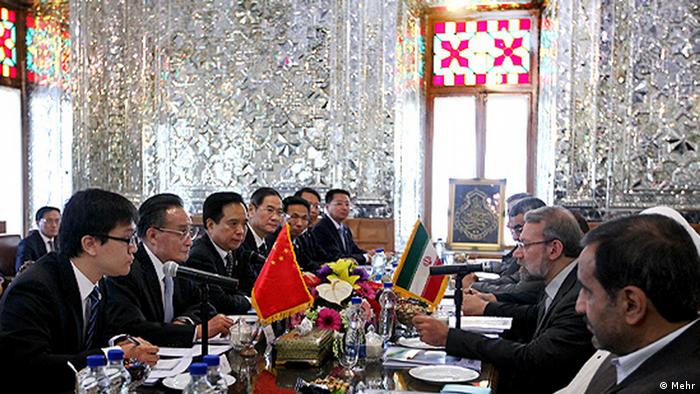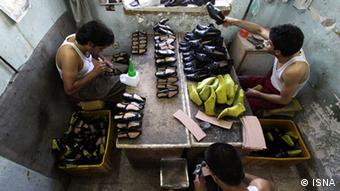這兩篇都取自紐約時報
千萬別小看了墨西哥
托馬斯·弗里德曼 2013年02月26日
墨西哥蒙特雷
在印度,人們會向你關於中國的問題;在中國,人們會向你關於印度的問題:哪個國家將在21世紀會成為更具統治地位的經濟體?我現在找到答案了——墨西哥。

你說這不可能?嗯,的確,僅有1.1億人口的墨西哥永遠不可能在總體經濟影響力上匹敵中國或印度。但我在參觀了蒙特雷的工業/創新中心之後學到了一
些東西。你所讀到的關於墨西哥的一切都是對的:販毒集團、犯罪集團、政府的腐敗和脆弱的法治都在阻礙這個國家的發展。但這只是故事的一半兒。實際情況是,
今天的墨西哥,看上去更像電影《老無所依》(No Country for Old Men)和《社交網絡》(The Social
Network)的瘋狂混合體。
墨西哥已在變。似乎墨西哥人潛意識地決定,國內與毒品相關的暴力事件,是他們不得不面臨的現實,也應該予以打擊,但不應該再定義這個國家了。墨西哥 已經簽署了44項自由貿易協議,比世界上任何其他國家都多,據《金融時報》(Financial Times)稱,這是中國的兩倍多,是巴西的四倍。墨西哥還大大地增加了畢業於其學校的工程師和技術工人的數量。把所有這些因素(再加上該國發現的大量廉 價天然氣)與中國不斷上升的工資水平和運輸成本相比較,就會並不令人驚奇地發現,墨西哥現在正把製造業市場份額從亞洲奪回,並在汽車、航空航天和家居用品 領域吸引到比以前更多的全球投資。
《金融時報》2012年9月19日的報道稱,“如今,墨西哥工業產品的出口量,比其他拉丁美洲國家的出口量總和還多。例如,克萊斯勒公司 (Chrysler)把墨西哥作為生產基地,供應一部分銷往中國市場的菲亞特(Fiat)500型汽車。”然而蒙特雷給我留下最深刻印象的,是從年輕一代 墨西哥人(該國50%的人口年齡在29歲以下)中湧現出的技術創業企業的數量,這得益於廉價、開源碼的創新工具,以及雲計算。
“墨西哥沒有讓自己經歷的那場危機白白浪費掉,”公民參與中心(Center for Citizen Integration)的主任帕特里克·凱恩·桑布拉諾(Patrick Kane Zambrano)說,他指的危機是,墨西哥企業在上世紀90年代輸給了中國,所以它們除了提高生產力以外別無選擇。桑布拉諾的網站就體現了這裡的年輕人 利用技術從事社會行動創新和模擬的熱情。該中心將民眾發佈在Twitter上的訊息彙集到一起,這些訊息包羅萬象,有關於壞掉的路燈的,也有關於“危急情 況”的,中心還實時地將它們標註在一款蒙特雷地圖手機應用程序上,提醒民眾避開哪些街道,通知警方哪兒發生了槍擊事件,並以多少天或多少小時來計算警方解 決問題的速度。
“中心通過施加壓力來推動變革,”該中心的負責人貝爾納多·比沙拉(Bernardo Bichara)告訴我說,“一旦一個公民感到自己並非無能為力,他就渴望能實現更多變革……首先,網絡將商業民主化,然後又將媒體民主化,現在正在將民主本身民主化。”
如果美國國務卿約翰·克里(John Kerry)在尋求新的議程,他也許應該將精力集中在同墨西哥建立更密切的一體化關係上,而不是在以色列、巴勒斯坦、阿富汗或敘利亞問題上白費力氣。讓墨 西哥與美國的製造業以及創新能力更好地一體化是一件雙贏的事情。它會讓美國公司獲得更多利潤,更有競爭力,從而能夠在國內國外進一步發展,同時,它也會給 墨西哥人一個留在國內並減少暴力的理由。我們每天和墨西哥有價值15億美元(約合93億元人民幣)的貿易,而我們在阿富汗每天卻要花三億美元。這不明智。
我們需要更微妙地看待墨西哥。當我在參觀蒙特雷理工學院(Monterrey Tech,被稱為墨西哥的麻省理工學院)的農業生物技術中心時,該中心的負責人、一位來自亞利桑那州的美國科學家蓋伊·卡迪諾(Guy Cardineau)告訴我,在2011年,“我的女婿從阿富汗服役回國,我們談論起他來墨西哥度聖誕節的事。但他告訴我,美國軍方說他不能來,因為國務 院發佈了去墨西哥旅遊的警告。我認為這相當諷刺。”
尤其具有諷刺的是,美國公司的確正在此地迅猛發展,這就是墨西哥去年的經濟增長率達到3.9%的原因之一,也是蒙特雷的外國直接投資額在去年創下歷史新高的原因之一。
“20年前,大多數墨西哥公司還不是全球性的公司,”Softtek公司(墨西哥主要信息技術服務提供商之一)的總裁兼創始人布蘭卡·特雷維諾 (Blanca Treviño)解釋道。這些墨西哥公司把重點集中在國內市場和為美國提供廉價勞動力上。“如今,我們認識到,我們不得不參與到全球競爭中”,這就意味着 “要提高效率。我們在中國無錫擁有一個(軟件)研發中心,但如今,我們在位於阿瓜斯卡連特斯市的研發中心從事同樣的業務會比在無錫中心更高效。”
墨西哥依然存在大量尚待解決的政府執政問題,但有意思的是,在經歷了15年的政治 癱瘓之後,墨西哥的三大政黨在新總統恩里克·培尼亞·涅托(Enrique Peña Nieto)的領導下剛剛簽署了一個“大妥協”,也被稱為“墨西哥協定”,共同打擊阻礙墨西哥發展的能源、電信和教育壟斷。如果他們成功了,也許墨西哥能 教給我們一些關於民主的真知。公民參與中心的比沙拉說,墨西哥人最近開始對美國產生疑問。“我們過去總覺得我們的政黨應該像美國政黨那樣——我們現在不這 樣想了。我們過去總認為我們的政府應該像美國政府那樣——我們現在也不這樣想了。”
在印度,人們會向你關於中國的問題;在中國,人們會向你關於印度的問題:哪個國家將在21世紀會成為更具統治地位的經濟體?我現在找到答案了——墨西哥。

Josh Haner/The New York Times
托馬斯·弗里德曼
墨西哥已在變。似乎墨西哥人潛意識地決定,國內與毒品相關的暴力事件,是他們不得不面臨的現實,也應該予以打擊,但不應該再定義這個國家了。墨西哥 已經簽署了44項自由貿易協議,比世界上任何其他國家都多,據《金融時報》(Financial Times)稱,這是中國的兩倍多,是巴西的四倍。墨西哥還大大地增加了畢業於其學校的工程師和技術工人的數量。把所有這些因素(再加上該國發現的大量廉 價天然氣)與中國不斷上升的工資水平和運輸成本相比較,就會並不令人驚奇地發現,墨西哥現在正把製造業市場份額從亞洲奪回,並在汽車、航空航天和家居用品 領域吸引到比以前更多的全球投資。
《金融時報》2012年9月19日的報道稱,“如今,墨西哥工業產品的出口量,比其他拉丁美洲國家的出口量總和還多。例如,克萊斯勒公司 (Chrysler)把墨西哥作為生產基地,供應一部分銷往中國市場的菲亞特(Fiat)500型汽車。”然而蒙特雷給我留下最深刻印象的,是從年輕一代 墨西哥人(該國50%的人口年齡在29歲以下)中湧現出的技術創業企業的數量,這得益於廉價、開源碼的創新工具,以及雲計算。
“墨西哥沒有讓自己經歷的那場危機白白浪費掉,”公民參與中心(Center for Citizen Integration)的主任帕特里克·凱恩·桑布拉諾(Patrick Kane Zambrano)說,他指的危機是,墨西哥企業在上世紀90年代輸給了中國,所以它們除了提高生產力以外別無選擇。桑布拉諾的網站就體現了這裡的年輕人 利用技術從事社會行動創新和模擬的熱情。該中心將民眾發佈在Twitter上的訊息彙集到一起,這些訊息包羅萬象,有關於壞掉的路燈的,也有關於“危急情 況”的,中心還實時地將它們標註在一款蒙特雷地圖手機應用程序上,提醒民眾避開哪些街道,通知警方哪兒發生了槍擊事件,並以多少天或多少小時來計算警方解 決問題的速度。
“中心通過施加壓力來推動變革,”該中心的負責人貝爾納多·比沙拉(Bernardo Bichara)告訴我說,“一旦一個公民感到自己並非無能為力,他就渴望能實現更多變革……首先,網絡將商業民主化,然後又將媒體民主化,現在正在將民主本身民主化。”
如果美國國務卿約翰·克里(John Kerry)在尋求新的議程,他也許應該將精力集中在同墨西哥建立更密切的一體化關係上,而不是在以色列、巴勒斯坦、阿富汗或敘利亞問題上白費力氣。讓墨 西哥與美國的製造業以及創新能力更好地一體化是一件雙贏的事情。它會讓美國公司獲得更多利潤,更有競爭力,從而能夠在國內國外進一步發展,同時,它也會給 墨西哥人一個留在國內並減少暴力的理由。我們每天和墨西哥有價值15億美元(約合93億元人民幣)的貿易,而我們在阿富汗每天卻要花三億美元。這不明智。
我們需要更微妙地看待墨西哥。當我在參觀蒙特雷理工學院(Monterrey Tech,被稱為墨西哥的麻省理工學院)的農業生物技術中心時,該中心的負責人、一位來自亞利桑那州的美國科學家蓋伊·卡迪諾(Guy Cardineau)告訴我,在2011年,“我的女婿從阿富汗服役回國,我們談論起他來墨西哥度聖誕節的事。但他告訴我,美國軍方說他不能來,因為國務 院發佈了去墨西哥旅遊的警告。我認為這相當諷刺。”
尤其具有諷刺的是,美國公司的確正在此地迅猛發展,這就是墨西哥去年的經濟增長率達到3.9%的原因之一,也是蒙特雷的外國直接投資額在去年創下歷史新高的原因之一。
“20年前,大多數墨西哥公司還不是全球性的公司,”Softtek公司(墨西哥主要信息技術服務提供商之一)的總裁兼創始人布蘭卡·特雷維諾 (Blanca Treviño)解釋道。這些墨西哥公司把重點集中在國內市場和為美國提供廉價勞動力上。“如今,我們認識到,我們不得不參與到全球競爭中”,這就意味着 “要提高效率。我們在中國無錫擁有一個(軟件)研發中心,但如今,我們在位於阿瓜斯卡連特斯市的研發中心從事同樣的業務會比在無錫中心更高效。”
墨西哥依然存在大量尚待解決的政府執政問題,但有意思的是,在經歷了15年的政治 癱瘓之後,墨西哥的三大政黨在新總統恩里克·培尼亞·涅托(Enrique Peña Nieto)的領導下剛剛簽署了一個“大妥協”,也被稱為“墨西哥協定”,共同打擊阻礙墨西哥發展的能源、電信和教育壟斷。如果他們成功了,也許墨西哥能 教給我們一些關於民主的真知。公民參與中心的比沙拉說,墨西哥人最近開始對美國產生疑問。“我們過去總覺得我們的政黨應該像美國政黨那樣——我們現在不這 樣想了。我們過去總認為我們的政府應該像美國政府那樣——我們現在也不這樣想了。”
How Mexico Got Back in the Game
February 26, 2013
MONTERREY, MexicoIN India, people ask you about China, and, in China, people ask you about India: Which country will become the more dominant economic power in the 21st century? I now have the answer: Mexico.
Impossible, you say? Well, yes, Mexico with only about 110 million people could never rival China or India in total economic clout. But here’s what I’ve learned from this visit to Mexico’s industrial/innovation center in Monterrey. Everything you’ve read about Mexico is true: drug cartels, crime syndicates, government corruption and weak rule of law hobble the nation. But that’s half the story. The reality is that Mexico today is more like a crazy blend of the movies “No Country for Old Men” and “The Social Network.”
Something happened here. It’s as if Mexicans subconsciously decided that their drug-related violence is a condition to be lived with and combated but not something to define them any longer. Mexico has signed 44 free trade agreements — more than any country in the world — which, according to The Financial Times, is more than twice as many as China and four times more than Brazil. Mexico has also greatly increased the number of engineers and skilled laborers graduating from its schools. Put all that together with massive cheap natural gas finds, and rising wage and transportation costs in China, and it is no surprise that Mexico now is taking manufacturing market share back from Asia and attracting more global investment than ever in autos, aerospace and household goods.
“Today, Mexico exports more manufactured products than the rest of Latin America put together,” The Financial Times reported on Sept. 19, 2012. “Chrysler, for example, is using Mexico as a base to supply some of its Fiat 500s to the Chinese market.” What struck me most here in Monterrey, though, is the number of tech start-ups that are emerging from Mexico’s young population — 50 percent of the country is under 29 — thanks to cheap, open source innovation tools and cloud computing.
“Mexico did not waste its crisis,” remarked Patrick Kane Zambrano, director of the Center for Citizen Integration, referring to the fact that when Mexican companies lost out to China in the 1990s, they had no choice but to get more productive. Zambrano’s Web site embodies the youthful zest here for using technology to both innovate and stimulate social activism. The center aggregates Twitter messages from citizens about everything from broken streetlights to “situations of risk” and plots them in real-time on a phone app map of Monterrey that warns residents what streets to avoid, alerts the police to shootings and counts in days or hours how quickly public officials fix the problems.
“It sets pressure points to force change,” the center’s president, Bernardo Bichara, told me. “Once a citizen feels he is not powerless, he can aspire for more change. ... First, the Web democratized commerce, and then it democratized media, and now it is democratizing democracy.”
If Secretary of State John Kerry is looking for a new agenda, he might want to focus on forging closer integration with Mexico rather than beating his head against the rocks of Israel, Palestine, Afghanistan or Syria. Better integration of Mexico’s manufacturing and innovation prowess into America’s is a win-win. It makes U.S. companies more profitable and competitive, so they can expand at home and abroad, and it gives Mexicans a reason to stay home and reduces violence. We do $1.5 billion a day in trade with Mexico, and have been spending $300 million a day in Afghanistan. Not smart.
We need a more nuanced view of Mexico. While touring the Center for Agrobiotechnology at Monterrey Tech, Mexico’s M.I.T., its director, Guy Cardineau, an American scientist from Arizona, remarked to me that, in 2011, “my son-in-law returned from a tour of duty in Afghanistan and we talked about having him come down and visit for Christmas. But he told me the U.S. military said he couldn’t come because of the [State Department] travel advisory here. I thought that was very ironic.”
Especially when U.S. companies are expanding here, which is one reason Mexico grew last year at 3.9 percent, and foreign direct investment in Monterrey hit record highs.
“Twenty years ago, most Mexican companies were not global,” explained Blanca Treviño, the president and founder of Softtek, one of Mexico’s leading I.T. service providers. They focused on the domestic market and cheap labor for the U.S. “Today, we understand that we have to compete globally” and that means “becoming efficient. We have a [software] development center in Wuxi, China. But we are more efficient now in doing the same business from our center in Aguascalientes, [Mexico], than we are from our center in Wuxi.”
Mexico still has huge governance problems to fix, but what’s interesting is that, after 15 years of political paralysis, Mexico’s three major political parties have just signed “a grand bargain,” a k a “Pact for Mexico,” under the new president, Enrique Peña Nieto, to work together to fight the big energy, telecom and teacher monopolies that have held Mexico back. If they succeed, maybe Mexico will teach us something about democracy. Mexicans have started to wonder about America lately, said Bichara from the Center for Citizen Integration. “We always thought we should have our parties behave like the United States’ — no longer. We always thought we should have the government work like the United States’ — no longer.”
*****
克里斯·安德森2013年01月30日
http://cn.nytimes.com/article/opinion/2013/01/30/c30tijuana/dual/
聖地亞哥
11月份,我辭去了《連線》(Wired)雜誌主編的工作,開始經營3D機械人技術公司(3D Robotics)。3年前,作為一項副業,我與一名合作夥伴一起開辦了這家位於聖地亞哥的無人機公司。我們研製自動駕駛技術和能夠自己飛行的小型飛機,包括飛機和多旋翼直升機。這些無人機為民用,每個售價幾百美元,它們沒有射擊功能,可拍照和攝像。它們的製作過程非常有意思(我們藉助了機械人的大量幫助)。為了這一行而放棄出版業不是一個太難的決定。
按圖放大
Robert Benson for The New York Times
墨西哥蒂華納,兩名工人在一家3D機械人技術工廠焊接電線。
按圖放大
Robert Benson for The New York Times
墨西哥蒂華納,奧塞亞斯·奧羅西奧在一家名為Udrones的3D機械人技術工廠展示一架飛行器。
按圖放大
Robert Benson for The New York Times
一架無人機在飛行。
相關文章
「印度製造」實為中國製造?
但就像許多製造商一樣,我的公司也面臨著一個相似的挑戰:它的主要競爭對手是中國公司,它們具有廉價勞力和一流工藝兩方面的優勢。所以,當我們去年進行一輪融資時,風險投資家們很自然地提出,他們需要我們給出一個合理解釋,我們這家新創立的小公司如何可以戰勝中國對手。這個問題的答案出乎投資者的意料,幾年前也曾讓我感到意外:墨西哥。準確地說是蒂華納(Tijuana,簡稱TJ)。
就像許多美國人一樣,直到最近,當我聽到“蒂華納”這個名字的時候,我只能想到販毒集團和廉價龍舌蘭酒。其實,“TJ”是一個擁有兩百多萬人口的城市(比相鄰的聖地亞哥要多),已經成為北美洲電子產品裝配的熱點城市。大多數由三星(Samsung)和索尼(Sony)等公司出品、在美國出售的平面電視都是在這裡製造的,這裡還生產從醫療器械到航空設備部件等各種產品。霍爾迪·穆尼奧斯(Jordi Muñoz)這個聰明的年輕人教了我關於無人機的知識,隨後和我一起開辦了3D機械人技術公司,他來自TJ,並說服我在那裡開辦了第二座工廠,來補充我們在聖地亞哥的生產。
我們穿梭於這兩座工廠之間,在聖地亞哥設計、製造我們的無人機,並在TJ進行組裝,這讓我回憶起10年前的一次類似的經歷。從20世紀90年代末到21世紀初,我住在香港(為《經濟學人》雜誌工作),目睹這個城市如何與邊界那邊中國內地廣東深圳的“經濟特區”配對。這兩座城市一起打造了一座世界領先的製造業中心:在香港完成商務、設計和財務工作,在深圳進行製造。這兩座城市的明確分工,成為了當代中國的典範。
今天,蒂華納之於聖地亞哥就如同深圳之於香港。從我們聖地亞哥的工程中心出發,駕車20分鐘就可以到達蒂華納的工廠,不需要護照。(想要返回需要護照,但有針對商務人士的快速通道。)我們的一些僱員每天上下班都穿越邊境。在TJ好醫生比較便宜,也較易找到,私立學校也是一樣,不過聖地亞哥的生活總體上還是更好些。從某些方面來說,這條邊境線感覺更像是歐盟各國名義上的邊界線,而不是將發達國家和發展中國家隔開的界限。
這種現象不只出現在TJ。在它東部的華雷斯,生產世界上超過40%電子產品(包括蘋果的iPhone和iPad)的富士康正在生產戴爾電腦。在它南部的克雷塔羅,一家工廠正在生產通用汽車(General Motors)安裝在克爾維特(Corvette)跑車上的變速器。通用電氣的GEnx渦輪噴氣發動機的設計和波音787夢想客機內部組件的製造也是在墨西哥完成的。製成品是該國的主要出口商品,該國製造業的私營投資也屬於世界最高水平。
認為墨西哥僅僅提供廉價勞動力的想法完全是不着邊際的。墨西哥每年有11.5萬名工程類學生畢業,在人均水平上大約是美國的三倍。其結果之一便是,想在TJ找一些機械類專家比在許多美國大城市要更容易。就這一點而言,在生產經濟學上有經驗的會計師和其他高技術工人也在墨西哥比較多。
所有這些結合便形成了這樣一種模式。美國製造商如何與來自中國、印度以及下一代經濟強國的製造商競爭,這種模式或許就是我們長久以來尋找的答案。因為TJ模式和外包沒有太多關係,而是“快包”。這種方法也可以在美國創造成千上萬的好工作。
任何企業家都會告訴你,供應鏈越短越好、越靈活越好。
首先,一條較短的供應鏈意味着,一家公司可以在想要生產的時候生產,而不僅僅是在它必須生產時生產。這看上去似乎有些奇怪,但許多小型生產商沒有這種選擇。當我們創建3D公司時,我們在中國生產每一件東西,一次就要訂幾千件,才能拿到一個好價格。這意味着我們必須寫下大額支票,來購買大批商品,在我們賣出所有那些產品之前,收不回這筆錢,這有時需要一年或更久。現在我們在本地進行生產,我們就能夠僅僅生產我們這一周所需的。
第二,這樣做風險更小。假如我們在設計中出了一個錯,我們已經浪費的生產時間最多幾天。假如我們的生產過程本身出了什麼問題,我們能很快發現。我們控制着部件的清單,因此我們很清楚,裝入我們產品的是什麼,也知道我們不會多花錢買進二手或盜版部件。而且如果我們想要保護自己的知識產權,我們可以做到,無須依靠其他公司將我們的利益置於首位。這還沒有考慮任何政治、環境或公關風險。像蘋果和沃爾瑪這樣的公司已經在中國通過教訓認識了這些風險。
第三,速度絕對會更快。我們仍舊從中國訂購一些部件,即便使用聯邦快遞,都似乎總要花上數周,乃至數月,這總比我們計劃的要長。這並非是在批評中國,對於所有關係較遠的小買家和大製造商來說,這就是它們關係的本質。假如我們是蘋果,我們可能能得到連夜生產的服務。但我們不是,所以我們就只好等。
最後一點是,一條短的供應鏈可以激勵創新。假如你把一件產品的大量生產外包,你就無法對這件產品進行改動,直到你把已生產的所有商品賣光為止(如果你想繼續留在這個行業,你就不能進行改動)。因此這通常意味着這些產品會留在你手上,得等到第一版賣光了才能開始製造第二版。但在你進行適時生產時,如果想要,你可以每天做改動,不論是使用一些更好的、更便宜的部件,還是改進設計。
同時,在長供應鏈的領域,事情也在變化。在中國,通脹調整後的勞動力成本,在過去十年已經漲到原來的三倍還多。中國南部城市的工資水平正在接近每小時6美元(約合37元人民幣),這和墨西哥的工資水平差不多。
不過這些因素是否足以把美國企業從“外包者”變為“快包者”,這還是個懸而未決的問題。但我拿自己的錢下注,它們會。1997年我從香港前往深圳時,我所感覺到的可能性,和我現在從聖地亞哥去蒂華納時的感覺是一樣的。21世紀的貿易路線,並不一定非要沿着馬可·波羅(Marco Polo)從西到東的方向。在新的製造業領域,這些路線完全不用太長。
克里斯·安德森是美國《連線》雜誌前主編,以及《製造商:新工業革命》(Makers: The New Industrial Revolution)一書的作者。
翻譯:林蒙克
Opinion
Mexico: The New China
By CHRIS ANDERSONJanuary 30, 2013
SAN DIEGO
IN November I quit my job as the editor of Wired to run 3D Robotics, the San Diego-based drone company I started with a partner as a side project three years ago. We make autopilot technology and small aircraft — both planes and multirotor copters — that can fly by themselves. The drones, which sell for a few hundred bucks, are for civilians: they don’t shoot anything but photographs and videos. And they’re incredibly fun to build (which we do with the ample help of robots). It wasn’t a hard decision to give up publishing for this.
Robert Benson for The New York Times
Oseas Orocio displays a flying vehicle at Udrones, a 3D Robotics factory in Tijuana, Mexico.
按图放大
Robert Benson for The New York Times
A drone takes flight.
相关文章
But my company, like many manufacturers, is faced with a familiar challenge: its main competitors are Chinese companies that have the dual advantages of cheap labor and top-notch engineering. So, naturally, when we were raising a round of investment financing last year, venture capitalists demanded a plausible explanation for how our little start-up could beat its Chinese rivals. The answer was as much a surprise to the investors as it had been to me a few years earlier: Mexico. In particular, Tijuana.
Like many Americans, until recently, when I heard “Tijuana” I thought only of drug cartels and cheap tequila. “TJ,” though, is a city of more than two million people (larger than neighboring San Diego), and it has become North America’s electronics assembly hot spot: most of the flat-screen TVs sold in the United States, from companies like Samsung and Sony, are made there, along with everything from medical devices to aerospace parts. Jordi Muñoz, the smart young guy who had taught me about drones and then started 3D Robotics with me, is from TJ — and he persuaded me to build a second factory there to supplement the work we were doing in San Diego.
Shuttling between the two factories — in San Diego, where we engineer our drones, and in TJ, where we assemble them — I’m reminded of a similar experience I had a decade earlier. In the late 1990s and early 2000s, I lived in Hong Kong (working for The Economist) and saw how that city was paired with the “special economic zone” of Shenzhen across the border on the Chinese mainland in GuangdongProvince. Together, the two created a world-beating manufacturing hub: business, design and finance in Hong Kong, manufacturing in Shenzhen. The clear division of labor between the two became a model for modern China.
Today, what Shenzhen is to Hong Kong, Tijuanais becoming to San Diego. You can drive from our San Diegoengineering center to our Tijuanafactory in 20 minutes, no passport required. (A passport is needed to come back, but there are fast-track lanes for business people.) Some of our employees commute across the border each day; good doctors are cheaper and easier to find in TJ, as are private schools, although it’s generally nicer to live in San Diego. In some ways, the border feels more like the notional borders of the European Union than a divide between the developed and developing worlds.
And it’s not just TJ. To the east, in Juárez, Dell computers are built by Foxconn, the company that manufactures more than 40 percent of the world’s electronics (including Apple’s iPhone and iPad). To the south, in Querétaro, a factory builds the transmissions that General Motors installs in its Corvettes. The design of General Electric’s GEnx turbine jet engine and the production of interior elements of Boeing’s 787 Dreamliner also happen in Mexico. Manufactured goods are the country’s chief export, with private investment in this sector among the highest in the world.
The notion that Mexicooffers only cheap labor is just plain off the mark. Mexicograduates some 115,000 engineering students per year — roughly three times as many as the U.S.on a per-capita basis. One result is that some machine specialists are typically easier to find in TJ than in many big American cities. So, for that matter, are accountants experienced in production economics and other highly skilled workers.
What all these pieces add up to is a model — one that might hold the long-sought answer for how American manufacturers can compete with those in China, India and the next generation of economic powerhouses. That’s because the TJ template isn’t so much about outsourcing as it is quicksourcing. And that’s also the way to create thousands of good jobs in the United States.
As any entrepreneur can tell you, the shorter and more nimble a supply chain is, the better.
First, a shorter supply chain means that a company can make things when it wants to, instead of solely when it has to. Strange as it may seem, many small manufacturers don’t have that option. When we started 3D, we produced everything in Chinaand needed to order in units of thousands to get good pricing. That meant that we had to write big checks to make big batches of goods — money we wouldn’t see again until all those products sold, sometimes a year or more later. Now that we carry out our production locally, we’re able to make only what we need that week.
Second, there’s less risk. If we make an error in a design, we’ve wasted at most a few days’ worth of production. If there’s something wrong in the production process itself, we can spot it fast. We control the component inventory, so we can see what’s going into our goods and know that we’re not being ripped off with used or pirated parts. And if we want to protect our intellectual property, we can do so without having to trust that other companies will uphold our interests above all others. And that’s saying nothing about political risk, environmental risk or P.R. risk, all of which companies like Apple and Walmart have learned about in Chinathe hard way.
Third, it’s simply faster. We still order some parts from China, and even though we use FedEx, it always seems to take weeks, and sometimes months, longer than we’d planned. That’s not a criticism of China; it’s merely intrinsic to any arm’s-length relationship between small buyers and big makers. If we were Apple, we’d get overnight service. But we’re not, so we wait.
Finally, a short supply chain is an incentive to innovate. If you’re outsourcing the manufacturing of huge parcels of a product, you can’t change that product until you’ve sold all the ones you’ve already made (at least not if you want to stay in business). So that often means sitting on your hands, waiting for Version 1 to sell out before starting to make Version 2. But when you’re doing just-in-time manufacturing, you can change the product every day if you want — whether to take advantage of some better or cheaper component or to improve the design.
In the land of the long supply chain, meanwhile, things are changing, too. Inflation-adjusted labor costs in Chinahave more than tripled in the past decade. Wages in China’s southern cities are approaching $6 an hour, roughly what they are in Mexico.
Whether factors like these are enough to turn American businesses from outsourcers to quicksourcers remains an open question. But I’m betting my money that they will. The sense of possibility I felt when I first crossed from Hong Kong to Shenzhen in 1997 is what I now feel when I cross from San Diegoto Tijuana. The trade routes of the 21st century don’t have to follow Marco Polo from West to East. Indeed, in the new manufacturing landscape, the routes don’t have to take you far at all.
Chris Anderson is the former editor of Wired and the author of “Makers: The New Industrial Revolution.”








